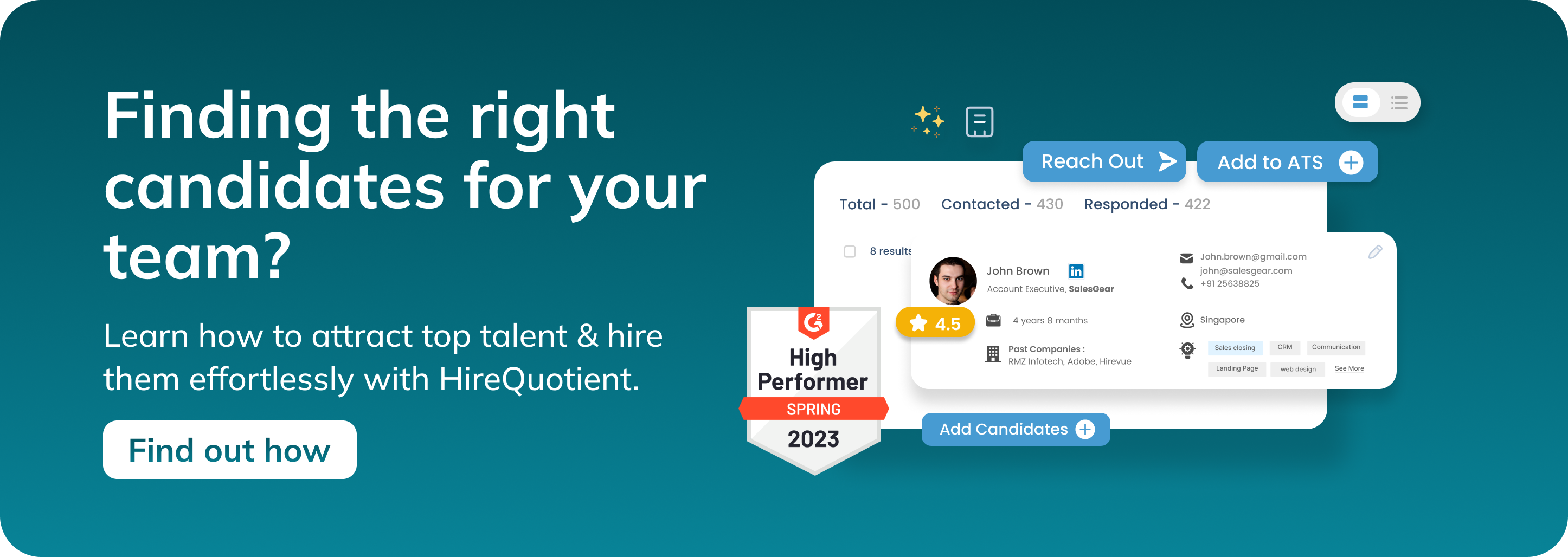Powering Up Your People Analytics
Published on October 5th, 2022
Advanced analytics has sought to revolutionize HR for over a decade, with most large organizations now having people analytics teams. However, many face obstacles, often mistaking basic reporting for true analytics. Cleaning data and integrating analytics into daily operations remains a challenge, hindering the promise of predictive insights. Those leading in people analytics reap substantial rewards, but many organizations are just beginning to tap into its potential.
What is People analytics?
People analytics, is the process of using data and advanced analytical techniques to gather, analyze, and interpret information about an organization's workforce. Its primary purpose is to make data-driven decisions and insights related to various aspects of human resources management, including recruitment, employee performance, retention, talent development, and overall workforce optimization. People analytics helps organizations identify trends, patterns, and correlations in employee data to improve HR strategies, enhance employee satisfaction, and ultimately achieve better business outcomes.
Demystifying People Analytics, HR Analytics, and Workforce Analytics
While "People analytics," "HR analytics," and "group of workers analytics" are frequently used interchangeably, there can be diffused differences in their utilization relying on the context. In trendy, these phrases seek advice from the identical area of the use of statistics and analytics for human assets control, but some groups or professionals may additionally emphasize certain components or purposes within the broader discipline:
- People Analytics: This term often highlights the focus on individual employees or "human beings" inside the organization. It may additionally mean a extra personalised method to HR analytics, in which information is used to understand and deal with the specific needs and stories of man or woman personnel.
- HR Analytics: "HR analytics" is a broader time period that encompasses all factors of facts analysis related to human assets. It consists of not simplest person worker statistics however also broader HR capabilities along with recruitment, group of workers planning, and organizational development.
- Workforce Analytics: This term emphasizes the analytical factor of managing the staff. It may be used to describe the practice of studying statistics to make knowledgeable decisions approximately the workforce as a whole, which include components like staffing degrees, competencies gaps, and standard workforce performance.
Many groups use those terms interchangeably, and the unique meaning can range relying at the context and the agency's technique to facts-driven HR practices. The key takeaway is that every one those terms involve using data and analytics to improve human sources control and selection-making.
What can powering your people analytics do for your organization … and how can your organization climb the ladder?
Climbing the People Analytics Ladder
Poor Data: Every organization starts at the bottom of the people analytics ladder - with poor data and even less information. The first step off that rung of the ladder is changing the organizational mindset to value data as the foundation of analytics, and recognizing that successful analysis demands consistent, structured data. Only then can your organization begin to develop the essential capabilities for collecting, storing, and controlling data
Good Data: This next step up the ladder is a big one … and it is difficult. Now that you have good data, you have to make it accessible to decision-makers quickly and effectively. Even if organizations have the data they need, they need time to experiment and to learn how to analyze it and generate insights that drive impact.
Strong Data: Congratulations! As you take the next step up the ladder, your data game gets stronger! Your team’s capabilities are supported by technologies that disseminate timely, accurate information, and your reporting tools are configured to empower decision-making. Your HR decision-makers take a data-driven approach, and decisions are supported by data and analytics.
Advanced Analytics: As you move to the advanced level on the ladder, your capabilities include data science and statistical expertise. You add advanced analytic specialists to your team and begin using statistical tools like Python and SPSS. A sophisticated mathematical understanding supports critical decisions, and the data-driven approach is trusted across the organization.
Reliable Predictions: As you reach the top of the ladder, your organization can make reliable predictions through data and analytics. You have a high volume of reliable data and deep expertise in predictive analytics. Your HR Leaders use analytics to inform and enhance human judgments, contributing to more accurate predictions of outcomes.
People Analytics Components
Data Management: You will need HR team members who take full ownership of their data repositories, allowing them to rapidly test new ideas, iterate and reduce dependencies on enterprise-level technology resources while ensuring strategic alignment with both HR and organizational objectives.
Analytics Capabilities: Your team will need deep technical knowledge and the ability to integrate and translate across a wide array of expertise and input. People analytics team members will need to be deeply grounded in data science and can translate data to make it understandable and hence convince the team to act.
Operationalizing Your Model: Success with people analytics requires alignment with organizational priorities while maintaining space for open experimentation and innovation. Effective implementation of people analytics needs an iterative approach that allows learning to occur without the fear of failure to enable people to trust the data and the process.
People Analytics Trends
The field of people analytics is rapidly evolving, driven by the growing importance of data-driven insights in HR management. In this section, we explore the latest trends that are shaping people analytics, including AI integration, diversity and inclusion efforts, remote work considerations, and more. These trends reflect the changing landscape of workforce management and its impact on organizational success.
AI and Machine Learning Integration:
The use of artificial intelligence (AI) and machine learning (ML) in people analytics has been growing. These technologies can provide more accurate predictions and insights into workforce behavior, engagement, and retention.
Predictive Workforce Planning:
Organizations are using people analytics to forecast their future workforce needs more accurately. This includes predicting skills gaps, identifying high-potential employees, and planning for succession.
Employee Experience Analytics:
A focus on employee experience has led to the development of analytics tools that measure and improve aspects like employee engagement, well-being, and satisfaction.
Diversity, Equity, and Inclusion (DEI) Analytics:
Companies are using people analytics to track and improve diversity and inclusion efforts. This includes analyzing recruitment, promotion, and compensation data for disparities.
Continuous Performance Management:
People analytics is being applied to enhance performance management processes, providing real-time feedback, and data-driven performance insights.
Remote Work Analytics:
The rise of remote work due to the COVID-19 pandemic has led to a need for analytics related to remote employee productivity, engagement, and well-being.
Skills Analytics:
Identifying and tracking employees' skills and competencies is becoming crucial for workforce development and talent management.
Ethical and Privacy Considerations:
With the increasing use of employee data, there is a growing focus on ensuring that people analytics practices are ethically sound and comply with data privacy regulations.
HR Chatbots and Virtual Assistants:
The integration of AI-powered chatbots and virtual assistants in HR systems can help in data collection and answering employee queries, which can be analyzed for insights.
Workforce Agility:
Companies are using people analytics to assess and enhance workforce agility, allowing them to quickly adapt to changing market conditions.
Employee Well-being Analytics:
The pandemic has underscored the importance of employee well-being. Analytics tools are being used to monitor and support employee mental and physical health.
HR Metrics Dashboards:
Interactive and real-time HR metrics dashboards are becoming more common, providing leaders with easy access to workforce data for decision-making.
People Analytics Example
Here's an example of how people analytics can be applied in a real-world scenario:
Scenario:
A large retail company, XYZ Retailers, is experiencing high turnover rates among its store employees. The company's HR team wants to understand the underlying factors contributing to this turnover and develop strategies to reduce it.
| Step | Description |
|---|---|
| 1. Data Collection | Gather data on various HR-related aspects, including exit interviews, performance evaluations, compensation, demographics, etc. |
| 2. Data Integration | Integrate data from multiple sources into a centralized database or data warehouse. |
| 3. Data Analysis | - Identify trends and patterns in the data. - Apply predictive analytics to develop models for predicting turnover. - Identify root causes of turnover and other HR challenges. |
| 4. Actionable Insights | - Create tailored retention and HR strategies based on data findings. - Implement training programs or initiatives to address identified issues. |
| 5. Monitoring and Feedback | Continuously monitor HR metrics and collect feedback from employees to assess the effectiveness of implemented strategies. |
| 6. Results | - Observe improvements in turnover rates and employee engagement. - Realize cost savings and increased productivity as a result of data-driven HR initiatives. |
Optimizing Talent Sourcing with People Analytics
People analytics can be a powerful tool for sourcing the right set of talent in the following ways:
Identifying Effective Sourcing Channels: Analyzing historical hiring data can reveal which sourcing channels (e.g., job boards, social media, referrals) have been most successful in bringing in high-quality candidates. This allows HR teams to allocate their resources and efforts more effectively to the channels that yield the best results.
Candidate Profile Analysis: By examining the profiles of successful hires, organizations can create a data-driven candidate persona. This persona outlines the skills, qualifications, and attributes that are most likely to lead to a successful hire, guiding HR teams in their candidate search.
Predictive Modeling: Using predictive analytics, organizations can develop models that identify candidates who are more likely to succeed in specific roles based on historical data. These models can assess factors such as skills, experience, and cultural fit, helping HR professionals focus their attention on candidates with the highest potential.
Diversity and Inclusion: People analytics can assist in ensuring diversity and inclusion in talent sourcing. It can identify areas where diversity efforts may need improvement and suggest strategies to attract a more diverse talent pool.
Talent Pipeline Management: Analyzing talent data over time can help organizations build and manage talent pipelines. They can identify potential candidates for future roles and engage with them proactively, reducing time-to-hire when a position becomes available.
Efficiency and Cost Savings: By streamlining the sourcing process and reducing time and resources spent on less effective channels, people analytics can lead to cost savings while improving the overall quality of hires.
Continuous Improvement: Regularly monitoring and analyzing sourcing data allows organizations to adapt their strategies based on real-time insights. It enables them to stay agile and adjust their approach to changing market conditions and candidate preferences.
Feedback Loops: Gathering feedback from hiring managers and new hires can provide valuable input for refining talent sourcing strategies further.
Incorporating people analytics into talent sourcing practices empowers organizations to make data-driven decisions, enhance the quality of hires, reduce recruitment costs, and ultimately, secure the right set of talent needed to drive business success.
Authors

Pankaj Deshmukh
Pankaj Deshmukh is a digital marketing professional working with HireQuotient. He strongly believes in the never-ending process of learning and stays updated with the latest trends in order to produce valuable content.
Hire the best without stress
Ask us how
Never Miss The Updates
We cover all recruitment, talent analytics, L&D, DEI, pre-employment, candidate screening, and hiring tools. Join our force & subscribe now!
Stay On Top Of Everything In HR



